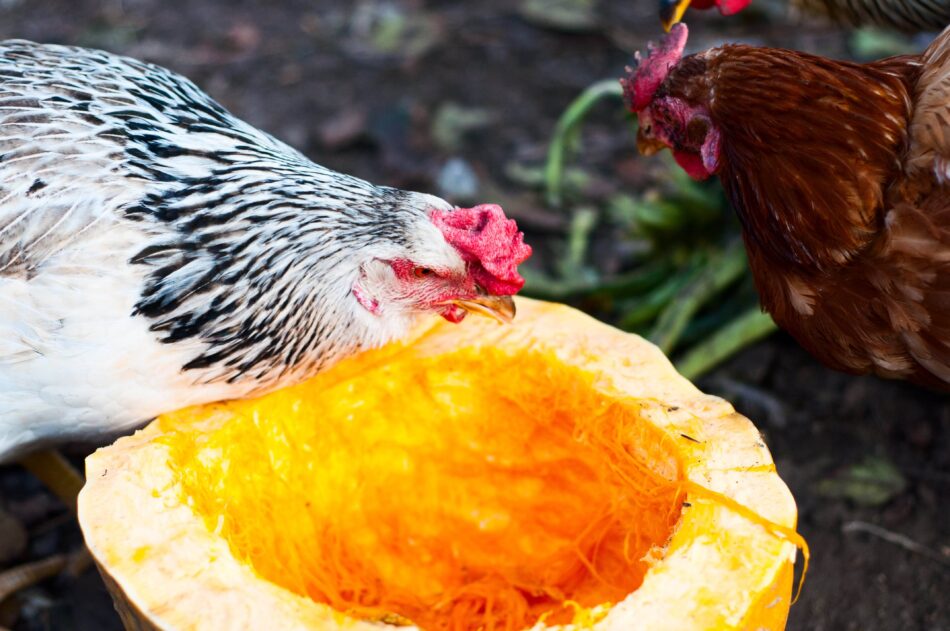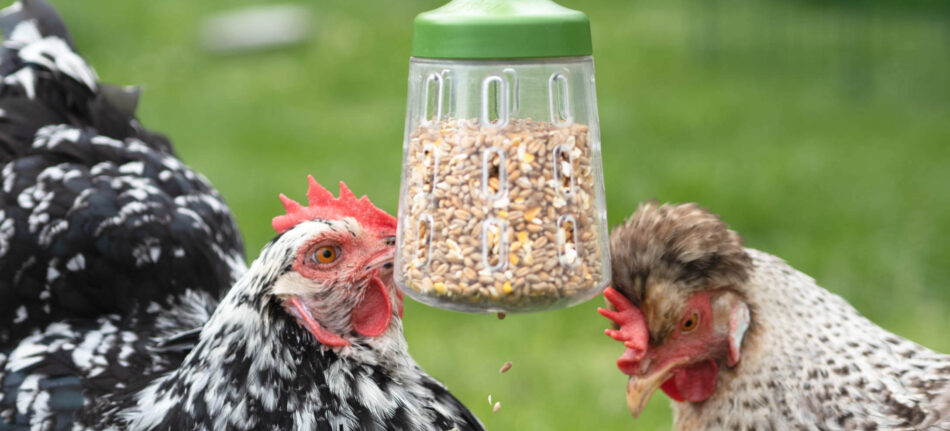A Thanksgiving Feast for Your Flock

Thanksgiving is a holiday for reflection, appreciation, celebration – and food! Millions of homes will set out a spread for their families to partake of on Thanksgiving Day. In fact, Americans typically consume around 3,000 calories in their one Thanksgiving meal!
And speaking of calories, did you know your chickens need more during the colder months? Your chickens will consume extra calories not just in one holiday-meal sitting, but all season long! A combination of molting cycles, cold weather, and less daylight drives chickens to eat more during the day in preparation for long, chilly nights. Sharing some pantry staples with your flock will give them the extra support they need this season.
Sharing is at the heart of Thanksgiving, and with extensive human-menus, you’re sure to find foods to create a feast for your flock as well! Several holiday food staples can be safely offered to your chickens for a Thanksgiving meal of their own. Serve it up in a creative way, and your chickens will officially be part of the holiday festivities!
Special winter-weather feeding considerations
As the days grow shorter, your chickens will start their annual molting cycle. They’ll shed their drab summer-worn feathers and don new, more dense feathers that will act as a winter coat. This stunning change requires lots of energy – so even though your hens won’t be laying eggs while they molt, they will need the extra calories to help grow new feathers and support their metabolisms.
The cold weather will also ramp-up your chickens’ appetites. Extra food means extra energy expenditure to digest, which warms up their bodies. So what are some of the best treats to give chickens in the winter? Some ideas include:
- Warm oatmeal
- Leftover pumpkins (whole or pureed)
- Carbohydrates such as cooked pasta or sweet potatoes
- Suet blocks (DIY or store bought in the wild bird section)
Consider giving your chickens supplements to support their immune systems and energy in addition to warm, energizing treats. You can also offer alfalfa hay in your chickens’ run as a supplement to their regular diet. Alfalfa hay has many nutritional benefits, and your chickens will spend hours scratching and pecking through the fiber and protein-rich stems and leaves.
Turkey-day treats for chickens
With so many delectable dishes on the menu for Thanksgiving, the possibilities to share with your feathered-family members are many! When preparing your holiday meal, set aside some trimmings or extra ingredients to feed to your chickens. Some holiday-meal ingredients to share with your chickens include:
- Cranberries (dried or fresh)
- Raisins
- Celery, carrots, squash, or pumpkin
- Sweet potatoes and yams
- Nuts (shelled) and seeds
You can also make suet cakes for your chickens as a special holiday treat. Many recipes can be found online, and you can customize your creations in molds to shape them! Suet is lard or tallow-based with various mix-ins such as nuts, seeds, whole grains, and dried, unsweetened fruit.
As with all treats, these should be fed in moderation, and should not be a replacement for their regular diet of laying pellets and scratch grains!
Fit for your table, but not for your chickens
While many Thanksgiving meal components are fine to feed your chickens, there are some foods that are important to avoid giving to your flock. These include:
- Chocolate
- Raw onions or garlic (or large amounts of either cooked)
- Raw potatoes or peels (raw sweet potatoes are fine)
- Citrus fruits
- Uncooked beans or rice
- Anything high in salt or fat
As tempting as it may be to give your chickens a slice of pie or leftover rolls, it’s much better to offer nutritional alternatives like suet cakes or vegetables. Sugary or fatty foods can cause digestive upset in hens, which is particularly detrimental when weather conditions are less than favorable!
Presentation matters
Chickens are very visual animals. They constantly scan their surroundings for threats, look for tiny movements from insects they’re seeking, and are known to enjoy bright, bold colors. Putting their Thanksgiving treats in a Caddi chicken treat holder is a great way to catch their attention through presentation. As an added plus, you can bring the Caddi chicken treat holder with you to the kitchen during meal-prep and place any chicken-safe goodies inside for safe keeping. Once the chicken treat holder is full, hang it in your hen’s run and watch their gratitude radiate!
You can also place a chicken peck toy in their run with either fresh corn, seeds, and shelled nuts, or with their usual scratch grains for added enrichment. Your chickens will be extra thankful when you combine food with visual appeal!
Thankful for our flocks
We’re thankful for our chickens, and they show their gratitude in the only way they know how – in providing delicious eggs! Some hens have personalities that rival a dog’s in affection or loyalty, while others are content to regard their owners from a distance. But no matter what their personalities are, chickens are always thankful to be together with their flock – which includes you!
By giving them quality chicken coops, runs, and accessories, you can ensure your hens are getting everything they need to be healthy, safe, and happy not just this holiday season, but all year long. And don’t forget to thank them for those eggs you’ll be cracking into your Thanksgiving dishes!
This entry was posted in Chickens
